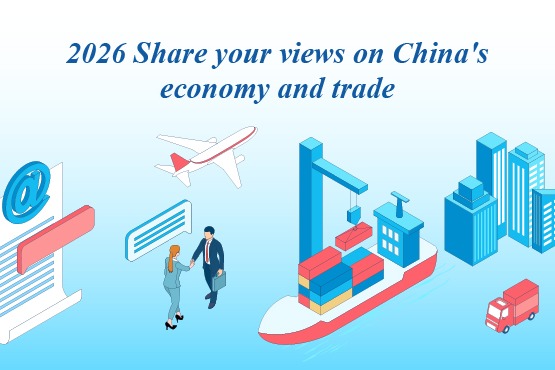Policy infrastructure crucial to region's smart integration


Editor's note: China Daily Hong Kong's GBA Focus series today introduces an opinion section that offers thoughts and suggestions by experts in various fields on how best to develop the Bay Area and integrate Hong Kong into China's national development plan by leveraging its advantages as an international financial and legal services center. We welcome readers' input on this historic project.

Cities in the Bay Area have been at the forefront of China's reform and opening-up over the past four decades. The nine mainland cities in the Pearl River Delta economic zone have constituted a key pillar of the Chinese manufacturing success, while Hong Kong and Macao have played a crucial role in bridging China's integration with the global markets. As China's growth model shifts toward innovation-driven development and the new "dual circulation" paradigm, the future of the Bay Area will be increasingly shaped by regional integration that facilitates the connectivity of markets and supply chains with two-way linkages that not only organize production from China to meet export demand, but also orchestrate sourcing globally to serve China's domestic market.
The economic logic of the Bay Area integration is unassailable. Given the region's scale and geographical advantages, deepening the integration of both product markets and input markets with the free flow of goods, capital, people and information can generate profound efficiency gains and productivity improvement. Policy efforts on market integration and administrative coordination can drive down transaction costs and fuel economic specialization, with cities in the region focusing more on their own competitive advantages and strengthening complementarities among each other along the value chains.
During recent years, we have witnessed remarkable progress in promoting physical connectivity and mobility by upgrading the intraregion hardware transportation infrastructure as well as software information and communications technology infrastructure. The Guangzhou-Shenzhen-Hong Kong Express Rail Link has reduced travel times from Hong Kong to Shenzhen to less than 20 minutes, and to Guangzhou to less than 50 minutes. The cost, quality and access to mobile internet communication services and smart applications across the region have continued to improve as well, with 5G technologies accelerating the digital integration.
However, smart integration in the Bay Area requires not only effective hardware and software infrastructure, but also, more fundamentally, an adaptive governance infrastructure, defined here as the institutional and policy system that delineates, registers, transfers and regulates the various rights and obligations of economic actors within the jurisdiction (such as property rights, labor and employment rights, social welfare, public services and emission rights). It comprises an array of supporting institutional arrangements that are devised over time and gradually integrated as a whole.
There remain substantial institutional gaps and policy barriers that limit the market integration and connectivity in the Bay Area. According to the annual survey commissioned by KPMG China, HSBC and the Hong Kong General Chamber of Commerce, "policy or regulatory ambiguity, uncertainty and unfamiliarity" continues to be the top challenge facing the Bay Area development and ranks as the most significant risk that companies think could impact their business plans for the region, with around 73 percent of surveyed companies identifying it as a concern in 2019, up from 68 percent in 2018's survey.
As institutional economists Axel Leijonhufvud and Xiao Geng put it elegantly, the modern market economy is an intricate web of contracts in which promises and understanding are constantly fulfilled and renewed following a set of formal rules or informal conventions. The web of contracts encompasses both the implicit or explicit transfers of rights in market transactions and the nexus of contracts that underpins the formation of firms and supply chains.
The integration and expansion of a regional market economy depends on the stable functioning and regeneration of its underlying web of contracts, which in turn depends on the quality of its governance infrastructure and policy environment provided by public action. There are various types of barriers, inconsistencies, gaps and loopholes in this web of contracts that can constrain market growth with undesirable transaction costs. It's up to the governance infrastructure and policy innovation to identify and sort out these problems with appropriate reforms. The more expansive and complex the regional economic networks grow, the more sophisticated and coherent the underlying governance infrastructure needs to become.
Asset ownership, employment and entrepreneurship are the three key modes for people to plug themselves into regional economic networks and share the upside gains and downside risks of a region's development, all of which will benefit from a more coherent and efficient governance infrastructure to delineate, protect and arbitrate the relevant rights and obligations.
For example, improving the institutional arrangements to support the delineation, exchange and protection of property rights are crucial for smart integration in the Bay Area. Cities in the region need to harmonize their standards of regulating market participants (such as licensing and the certification of professional services qualifications), recording property rights and structuring their transfers (such as property registers, custodian arrangements and financial payment infrastructure), and adjudicating commercial disputes among actors. The recent development of the Stock Connect, Bond Connect and the launch of the Cross-boundary Wealth Management Connect Pilot Scheme all represent substantial steps in improving the financial asset ownership and exchange infrastructure to facilitate the flow of capital and promote more integrated delivery of financial services in the Bay Area.
Just as the property rights institutions are central to the flow of capital, the governance infrastructure in employment rights, social welfare and related public services is essential to the flow of people. Cities in the Bay Area need to work together in narrowing the gaps and loopholes in the standards of their healthcare, education, housing, tax incentives, customs arrangements, and the provision of a social safety net. There have been reform initiatives to make it more convenient for talent to work across cities in the region, but we are still at an early stage of overcoming existing barriers and facilitating larger-scale labor mobility.
Smart integration in the Bay Area is predicated on the complementary roles of the government and market, as private sector initiatives need to be embedded in a framework of public action that encourages economic integration, restructuring, diversification and innovation beyond what the market forces on their own would generate. It is a complex process that comprises many sub-processes of policy and institutional evolution.
Just like we need a computer operating system to manage different software applications, we need a sufficiently adaptive and inclusive governance infrastructure that can ensure system coherence and compatibility while simultaneously empowering variation and specialization at the sub-system level. Each city in the Bay Area has its own conditions and features, there is arguably no one-size-fits-all solution when it comes to strengthening regional competitiveness. Nonetheless, a common policy architecture combining top-down design and bottom-up experimentation can be created to promote collaborative processes among different cities to search for paths to reach common goals and desired outcomes within the broader context of national development.
The author is an assistant professor at the Centre for China Studies and the Lau Chor Tak Institute of Global Economics and Finance at the Chinese University of Hong Kong.
The views do not necessarily reflect those of China Daily.
- Taiwan opposition lawmakers announce plan to impeach Taiwan leader Lai Ching-te
- Half marathon route along Suzhou Creek in Putuo
- People across China hold diverse events to mark Winter Solstice
- China issues guidelines to crack down on tobacco-related illegal activities
- 1 arrested after Hong Kong money changer employee robbed of about 1b yen
- Efforts intensified to ease business issues




































